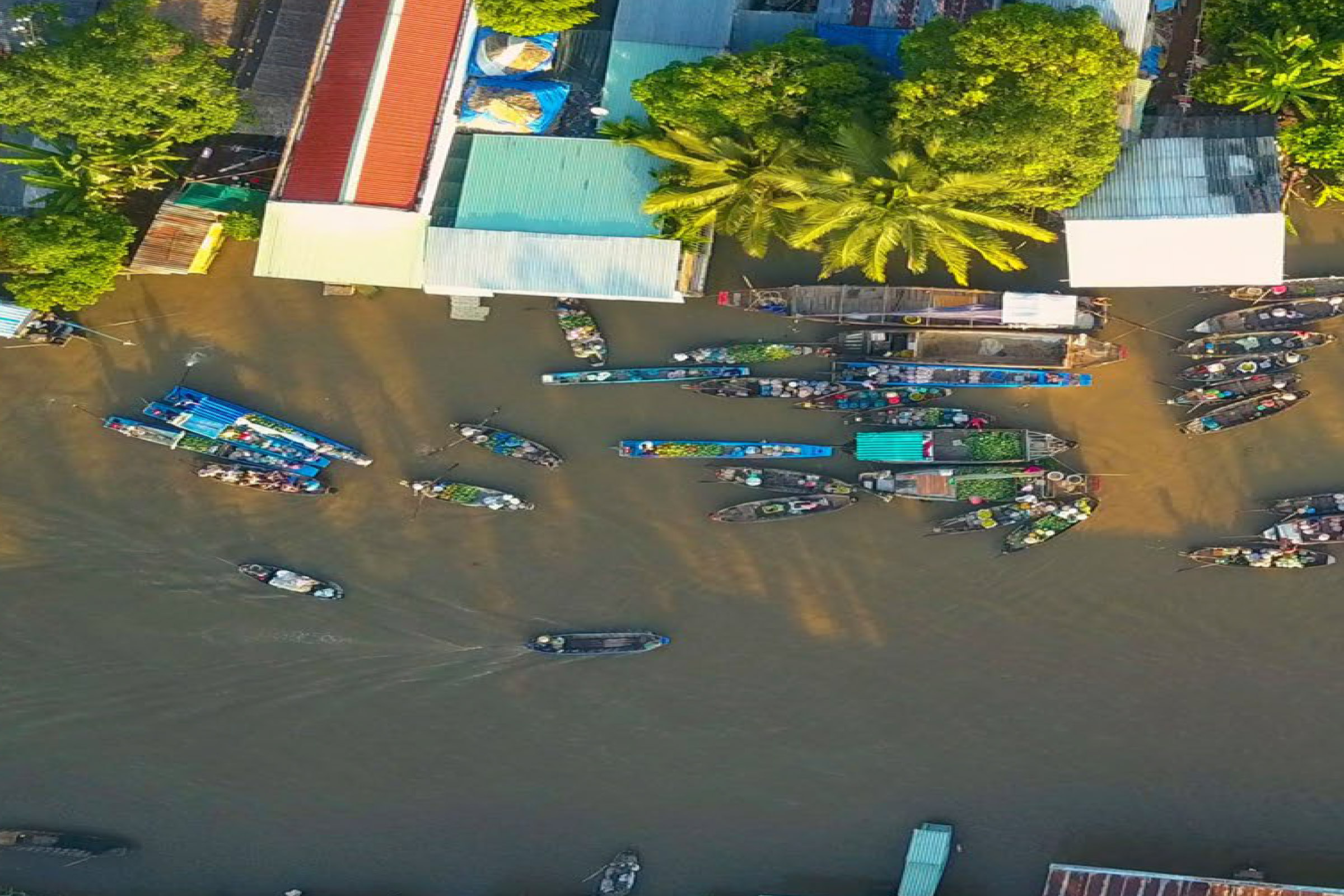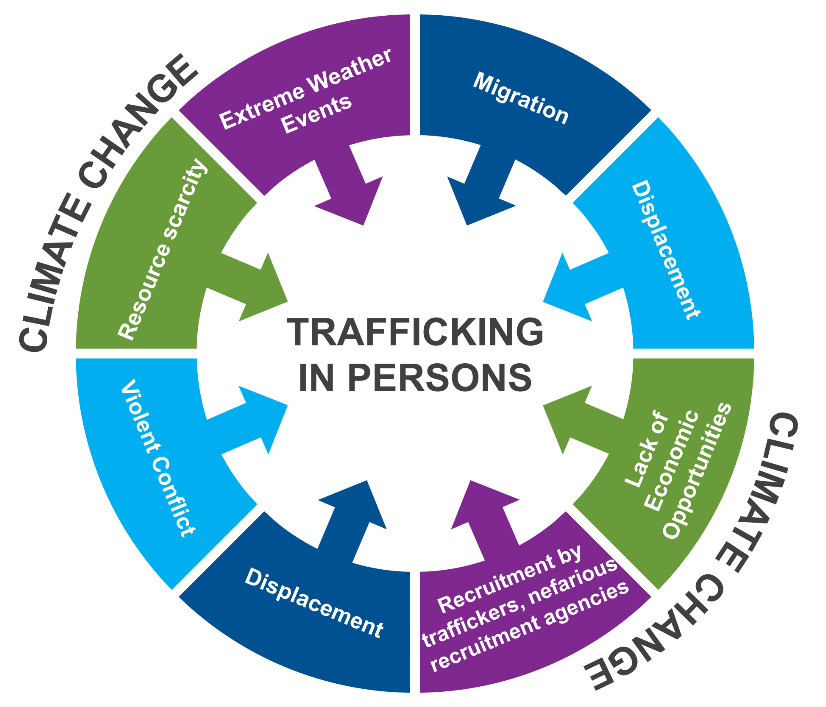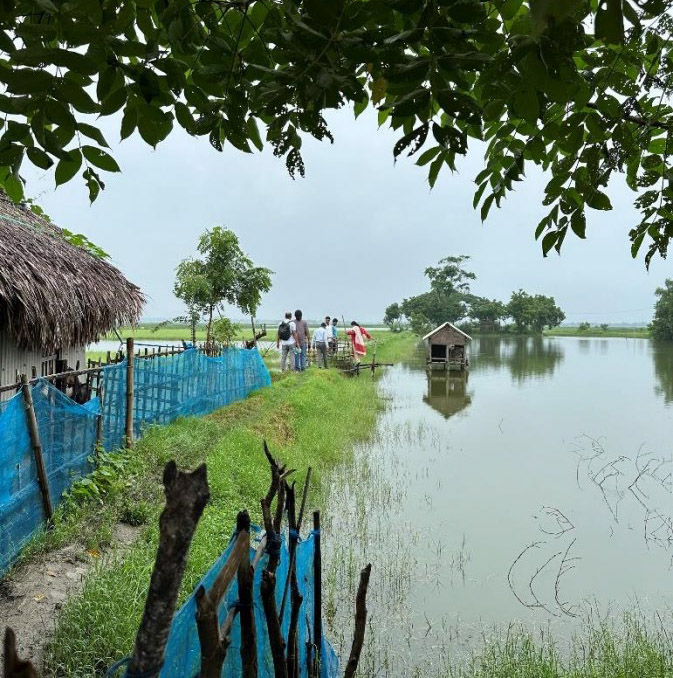
Resource
Winrock International Addresses Intersections of Climate Change and Trafficking in Persons
Winrock International recognizes the interconnection between climate change and trafficking in persons (TIP). Through our projects, we actively address this nexus, implementing innovative solutions that mitigate climate impacts, protect populations vulnerable to TIP from exploitation, and foster sustainable livelihoods, thereby creating resilient communities for future generations.
The Winrock Way
Winrock’s approaches target and strengthen sources of resilience — including livelihood diversification, agricultural technologies and practices, market access, financial inclusion and social capital — and provide comprehensive analysis of the connections between climate change and TIP.
Climate Change as a Threat-Multiplier
Climate pressures exacerbate resource scarcity and restrict economic opportunities, leading to displacement and violent conflict, and pushing individuals to migrate for livelihood opportunities. It is expected that by 2050, 216 million people globally will be displaced due to climate change(1). While people migrate or navigate displacement, traffickers prey on these precarious situations .

Change Impacts and Push Factors for Trafficking in Persons
Winrock’s former USAID Safe Migration in Central Asia (SMICA) project, through its partner “LLC Ishte,” conducted research to analyze climate-related migration trends in Central Asian countries. The study revealed that climate stressors (e.g., increased temperature, decreased precipitation, water scarcity, increased smog) paired with low adaptive capacity (e.g., decline in agricultural productivity, decreased livestock income, decreased market access and financial stability) are significant migration push factors for trafficking or risky migration. The study also revealed that general awareness about climate change risks is low and government programs directly addressing climate-induced migration are non-existent.
The study includes recommendations and foundational reference points which Kazakhstan and Kyrgyz Republic governments can use for integrating migration challenges into national planning and communications strategies.
To bolster learning and regional cooperation among safe migration and counter trafficking partners, SMICA and NGO partner, Daris, established a Climate Change and Migration working group which conducted a detailed needs assessment of rural populations in Kazakhstan and Uzbekistan. The needs assessment will guide the working group’s prioritization of future activities.

Winrock’s Unique Project Interventions
Winrock’s former U.S. Department of State Bangladesh Program to End Modern Slavery AugroJatra Climate Change project (B-PEMS) aimed to reduce the prevalence of TIP in farming and fishing households vulnerable to climate change. Core to B-PEMS is expanding available research on the intersection of climate change and TIP. B-PEMS provided technical assistance to farmers, fishers and fish farmers in 449 villages to conduct climate-smart agriculture and aquaculture and link them to skills training, job placement, and micro-enterprise development for alternative livelihoods.
On a systemic level, Winrock enhances public policy on climate change and TIP and, on the individual level, increases household access to adaptive planning resources.
Winrock’s Swiss Development Corporation-funded Ashshash II project works in 10 districts in Bangladesh with high levels of climate-related outgoing migration and high TIP risks. Ashshash II targets climate change-related TIP by encouraging resilience and adaptive behaviors, including linking survivors to green employment opportunities in climate smart agriculture and aquaculture programs. Ashshash also increases the resilience of TIP survivors’ communities through advocacy for stronger social safety nets and adaptation practices, such as relocating away from areas most susceptible to climate disasters, encouraging advocacy for improvements to local infrastructure and transit, and promoting women’s empowerment initiatives and inclusion of survivor voices and populations at-risk of TIP in decision-making processes. Additionally, Ashshash strengthens household resilience to climate disasters through increased awareness of household-level strategies, like building floors and shelves above flood lines and improving ventilation through false ceilings to reduce temperatures.
